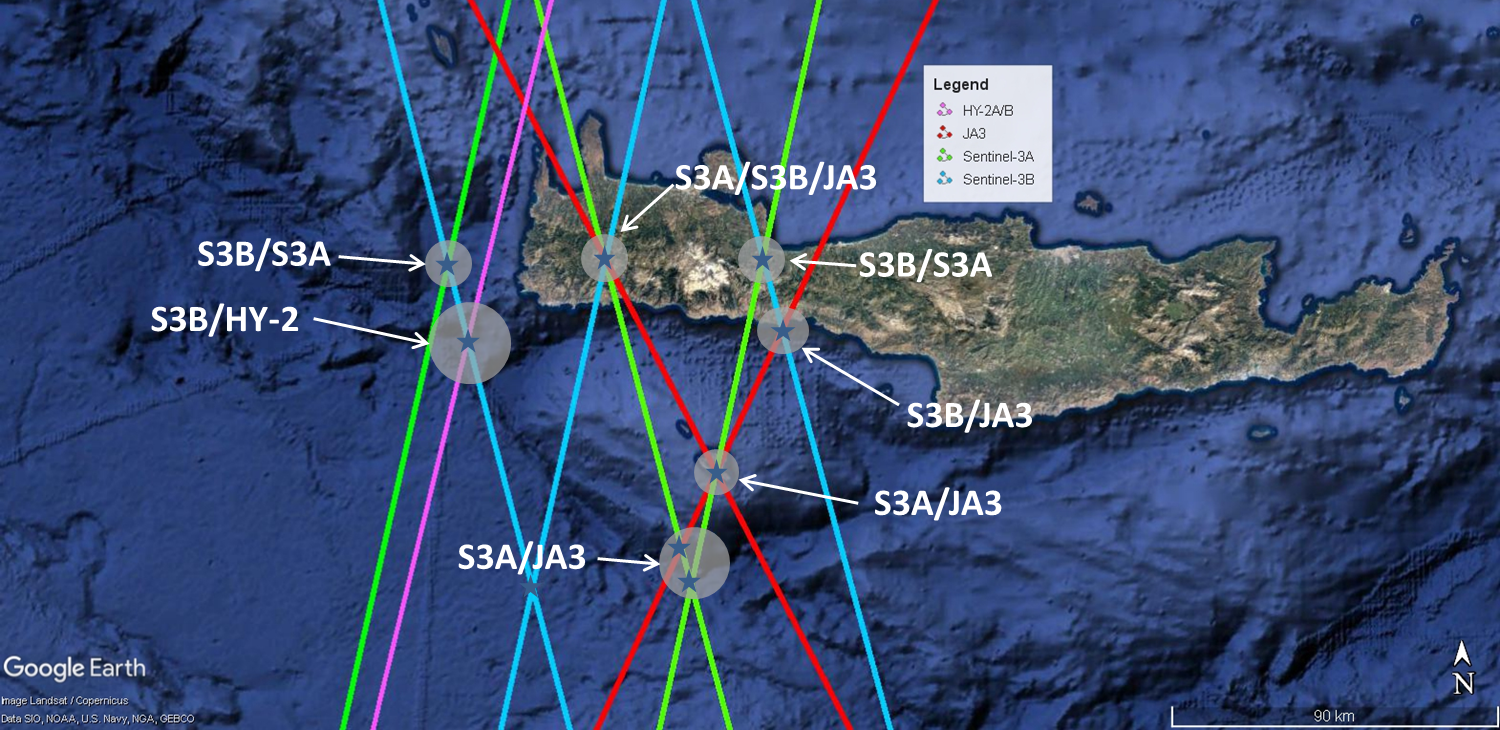The performance of Sentinel-3 will be validated against other altimeter missions (i.e., Jason-3/Jason-CS reference missions, CryoSat-2, HY-2B and its follow on, etc.). This is carried out on land and at open seas employing the transponder and sea-surface calibration techniques.
Multi-mission crossover analysis constitutes an alternative approach to estimate the relative bias between two (or more) satellite altimeters. This analysis involves the examination of the sea-surface heights, as estimated by each satellite altimeter when they happen to fly over the same location at sea within a short period of time (i.e., 1-3 days) (Fig. 1). Note that CryoSat-2 ground-tracks are not presented in Fig. 1, because of its drifting orbits.
 |
| Fig. 1. Crossover locations at sea and on land, over the Permanent Facility for Altimetry Calibration, for the Sentinel-3 missions and other altimeters. |
Implementation of crossover analysis at sea does not require any in-situ measurements. This is not the case for transponder calibrations. Crossover analysis over land may be employed only when two satellites overpass the transponder within a short period of time (i.e., a few seconds up to a few hours).
The following crossover locations of satellite altimetry missions have been identified in west Crete, Greece.
| Crossover Location | Altimetry Missions | Local Cal/Val site |
| Lat: 35.142690° N Lon: 23.367572°E |
Sentinel-3B Pass No.14 HY-2B Pass No. 278 |
CRS1 |
| Lat: 34.642546° N Lon: 23.983581° E |
Sentinel-3A Pass No. 14 Jason-3 Pass No. 18 |
Gavdos |
| Lat: 34.809865° N Lon: 24.092945° E |
Sentinel-3A Pass No. 335 Jason-3 Pass No. 109 |
Gavdos |
| Lat: 35.163577° N Lon: 24.296527° E |
Sentinel-3B Pass No71 Jason-3 Pass No. 109 |
RDK1 |
| Lat: 35.337911° N Lon: 23.779521° E |
Sentinel-3A Pass No. 14 Sentinel-3B Pass No. 335 Jason-3 Pass No. 18 |
CDN1 |
The main advantage of the sea-surface crossover analysis is that it can be employed globally as it only requires the sea-surface heights as measured by each altimeter. No permanent Cal/Val site is necessary. Without doubt, the presence and continuous operation of the sea-surface and transponder infrastructure in this PFAC enhance accuracy, robustness, redundancy and reliability of the Cal/Val results.







